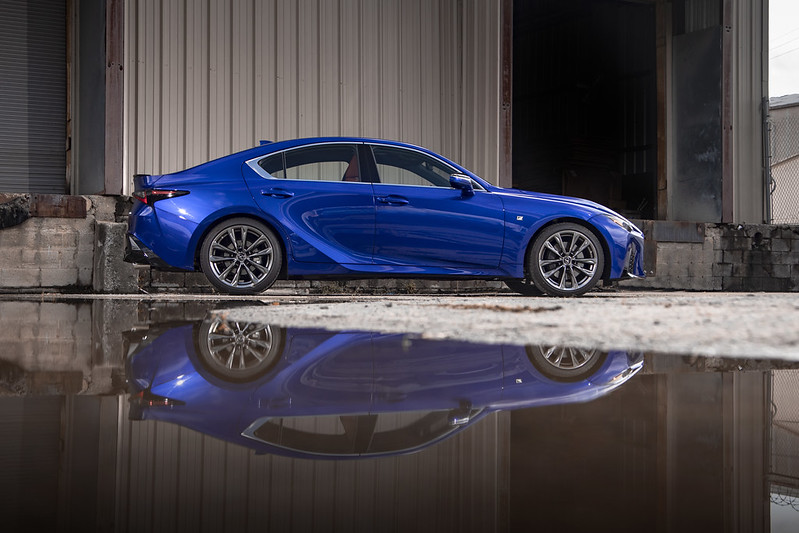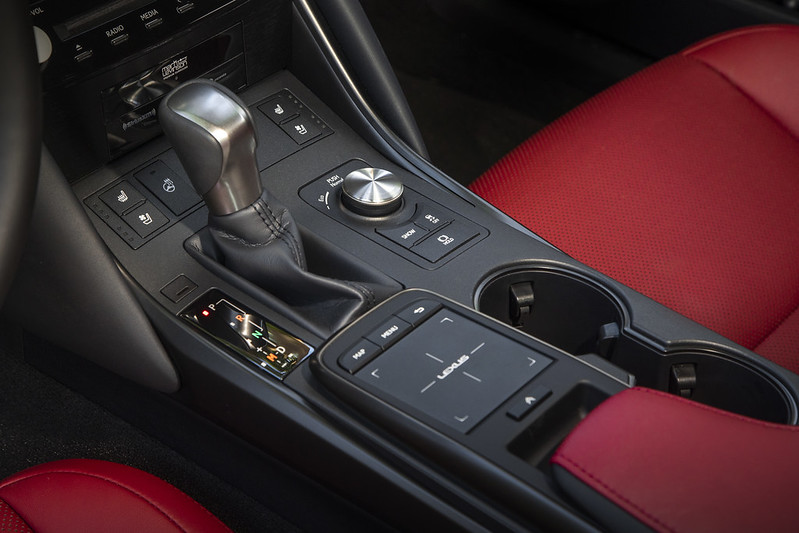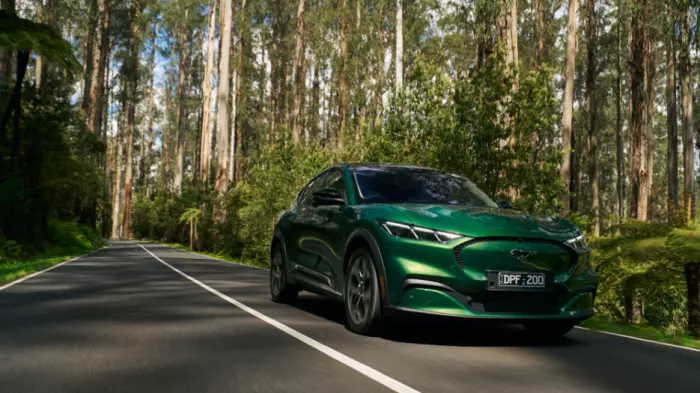It’s not often I get to drive two variants of the same car back to back, but recently, I’ve been behind the wheel of the Lexus IS350 F Sport and then the IS300 Limited.
This was probably a mistake.
Confusingly, they are as similar as chalk and cheese to drive, but externally they are near identical. It’s a bit like the Olsen twins (Mary-Kate and Ashley are not actually identical twins! Who would have thought?).
Lexus NZ general manager Andrew Davis describes the new IS as an “enthusiast’s car”, and that certainly makes sense for the 350 F Sport. Like the recently reviewed Lexus LC Convertible, it is a heap of fun to drive and performs with a level of precision Lexus says comes from the fact it was developed at the company’s new Shimoyama Technical Centre in Japan.
 The Lexus IS300.
The Lexus IS300.The IS300 Limited, which sells for $83,000, feels like it is meant for, erm, the older generation. My version has a tan leather interior and everything is very “tasteful”.
But I drove the F Sport first, which will have hurt the Limited’s chances.
Lexus also has hybrid versions of the IS300 and I drove one for an hour or so back at the launch in January. It was excellent. I recommend it over the petrol IS300 versions.
There are quite a lot of different IS300s. To clear things up, here are the seven variants:
• IS300 2.0L Petrol Turbo, $70,900.
• IS300 2.0L Petrol Turbo F Sport, $80,500.
• IS300 2.0L Petrol Turbo Limited, $83,000.
• IS300h 2.5L Hybrid-electric, $76,200.
• IS300h 2.5L Hybrid-electric F, $85,800.
• IS300h 2.5L Hybrid-electric Limited, $88,300.
• IS350 3.5L V6 F Sport, $101,800.
The IS350 F Sport has a 3.5-litre V6 engine generating an impressive 232kW of power and 380Nm of torque. It has a piano-black rear spoiler and reached the speed limit in a respectable 5.9 seconds.
That January launch saw a bunch of jaded motoring writers travel from Palmerston North to Auckland, via a night at the Taupo Hilton and racing at Hampton Downs Motorsport Park in northern Waikato.
We took mostly the winding back roads, all carefully chosen and pre-driven repeatedly to make the most of the cars.
 The Lexus IS350 F Sport.
The Lexus IS350 F Sport. At Hampton Downs, F Sport was the crowd favourite. But for all the models, it was easy to trust the car to corner fast and smooth, then to accelerate hard. Hitting our limit of 160km/h was no issue, even with a limited runway.
The assembled journos also liked the Hybrid, with its 2.5-litre petrol engine aided by the electric motors and a competent CVT transmission allowing for seamless shifting.
At $101,800, the F Sport feels both a little under-priced and, strangely, a little out-specced by its price-bracket sedan rivals. I like the mildly aggressive front styling and the general understated nature of the brand. From the rear, it doesn’t look that special.
Although it is a hell of a lot of car for $100k, as ludicrous as that statement sounds, it may not be enough to woo buyers from its German opposition. The new BMW 330e, which is $6000 cheaper and a plug-in electric, will reach the speed limit in 5.8 seconds and can also do 60km in pure electric mode (review next week). It has as much get up and go as the F Sport, and is incredibly fuel efficient.
The IS350 F Sport’s fraternal twin, the IS300 Limited, has a two-litre turbo-charged motor that provides 180kW of power and 350Nm of torque, hits 100km/h in seven seconds and has a top speed of 230km/h – 5km/h faster than the F Sport.
It drives like a really good sedan, rather than something special. Its cabin is cloaked in soft leather and feels premium, the take-off speed suffers a little turbo lag but is perfectly acceptable, and it corners like a large-ish sedan. That’s all well and good, but when it is sold as a performance sports sedan, something feels a little lacking.
Once, when I was reversing out of a mall car park, it incorrectly sensed another vehicle crossing behind and slammed the brakes on so hard I thought I had smashed into a concrete wall.
The F Sport didn’t try to pull any trick like that, which may be due to its settings or may be a coincidence.
For both cars, the ride is smooth and comfortable, and the Sport mode adds an extra dimension of aggression. On the F Sport, those 52kW of extra power make a world of difference under normal conditions. In Sport+ mode turns it into a beast.
 The Lexus IS350 F Sport centre console.
The Lexus IS350 F Sport centre console.The centre console lacks space for keys, phones or anything. It has two drink holders, but everything else has to go into a top-opening cupboard. It is inconvenient.
There’s no wireless phone charging or heads-up display – both features now standard even on much cheaper vehicles.
But there is a CD player. Maybe that says something about the age of the target market, or maybe it is a cute idiosyncrasy, but I can’t recall any other new car that still has one. I’m told Lexus was the last car maker to ditch the tape deck, too.
Lexus has just announced it is bringing its all-new electric UX 300e to New Zealand this year, and that’s likely to be a gateway to tech improvements across the range.
The IS300 and IS350 are luxury and performance in a format that’s neither too flashy nor too manic.
I really want the underdog to win here, defeating its German rivals. But I’m not quite sold. The 2021 IS300 range are really good cars; they might just not be really great.














